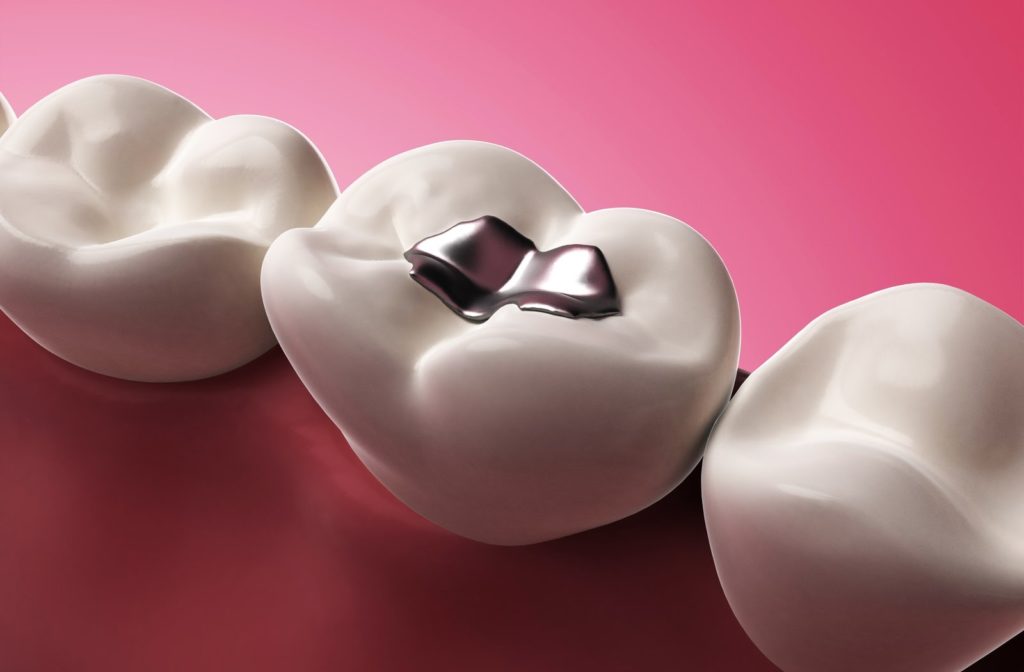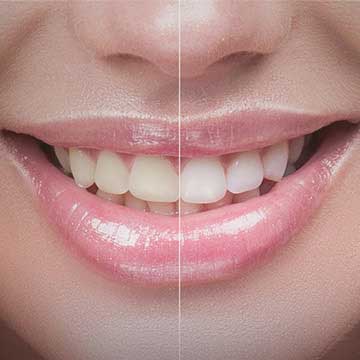During a dental exam, your dentist may find a cavity or two that needs filling. When you need your cavity filled, materials such as dental amalgam can be used. Some question amalgam’s safety, however, this is due to the mercury inside despite its many decade-long use.
If you need a cavity filled, are there potential dangers with dental amalgam? Continue reading to learn more about amalgams, mercury, and safety.
What are Amalgam Fillings?
Dental amalgam is a metal alloy used for dental fillings. It’s one of the strongest possible materials for tooth fillings and contains 50% mercury while tin, copper, and silver make up the rest. Because of its silver colour, many refer to dental amalgam as “silver fillings.”
Amalgam fillings have become less popular as white resin (composite) fillings are more esthetic. However amalgam fillings still have a place in dentistry as they typically are more sturdy and can withstand the pressure from consistent chewing. Mercury is known to be a dangerous substance, so why is it used in amalgam fillings?
Why is Mercury Involved?
Amalgam fillings are made of multiple metals to provide them with long-lasting durability and strength such as silver, mercury, tin, and copper. Zinc, indium, and palladium are known to be used in amalgam less commonly. With so many strong metals, why does mercury need to be included in the filling?
Mercury is used in small doses to make the dental filling more flexible. It creates a compound when mixed with an alloy powder and is soft enough to press into the tooth. This metal hardens quickly while being able to handle years of consistent chewing and biting.
Mercury is generally known as being a toxic material you should not expose yourself to, so is it dangerous for mercury to be used in amalgam fillings?

Is Mercury Dangerous?
You’re exposed to mercury every day in small doses. It’s a naturally occurring chemical found in air, water, and soil, and it exists in various forms. These forms are:
- Elemental
- Inorganic
- Organic
Elemental mercury is a silver, shiny liquid, and is the kind used in amalgam fillings. Inorganic mercury forms when elemental mercury combines with other elements (sulphur, chlorine) and is also known as mercury salts. Organic mercury occurs when elemental mercury combines with carbon and hydrogen.
If elemental mercury is the form used in dental fillings, is it dangerous?
Is Mercury in Dental Amalgam Toxic?
Mercury is toxic as a single element, but it’s bonded in an alloy with several other metals for dental amalgam. When the amalgam is placed and set inside of the tooth the mercury released is insignificant.
Health Canada estimates the average Canadian age 20 to 59 years old absorbs approximately 9 millionths of a gram of mercury per day. Dental amalgam mercury accounts for around 3 millionths of this total. Mercury vapour from dental amalgam counts for less than half of the daily mercury you naturally encounter.
Whenever a foreign substance is used in the body, the associated health professional must weigh the possible risks and benefits. A professional would never purposely risk their patient’s long-term health.
This is no different with amalgam fillings, and scientific evidence indicates there are no significant risks involved.
Benefits of Amalgam Fillings
Your dentist will take many factors into account when recommending filling materials for each specific tooth, these include: your overall cavity risk, oral hygiene, size of the cavity, area of the mouth the filling is being done and patient preference. For patients that are high cavity risk and have poor oral hygiene amalgam fillings will last longer and have a lower risk of developing redecay. If a cavity is in an area that can’t be kept dry a white filling will not bond well to the tooth, this is also an indication to use amalgam fillings. Amalgam fillings also tend to be stronger as compared to white fillings. You and your dentist can discuss which filling material is right for you and your tooth.
Are Amalgam Fillings Right for You?
Do You Need to Receive Amalgam Fillings?
Current evidence supports dental amalgam as an effective and safe material for dental fillings, but dentists have a responsibility to obtain clear patient consent before performing any treatments. If you feel uncomfortable with dental amalgam, your dentist will work with you to find the best material for your tooth filling.
Your Dentist is Here for You
Your dentist is here to help you achieve and maintain good oral health. If you need a filling but do not want dental amalgam used, there are several other materials available, including:
Tooth-coloured fillings such as composite, porcelain, or glass ionomer provide a natural look to your teeth, but they may not be as durable. The chosen material depends on the tooth’s location; molars generally need a durable material.
No matter the filling you receive, your dental team will help it last for years. If you have symptoms of a possible cavity or need a regular dental exam, request an appointment.









